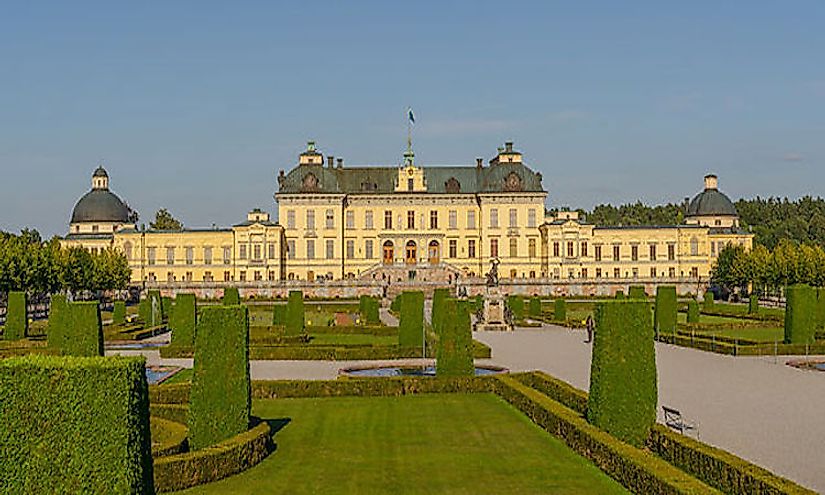UNESCO World Heritage Sites In Sweden

Sweden has 13 UNESCO world heritage sites. 12 are cultural, one natural, and 1 is a mixed heritage site. The Royal Domain of Drottningholm in Stockholm has a 300-year-old theater. The Laponian is an exceptional biological system with two entirely different landscapes occupying the same area. In contrast to the Laponian, the High Coast, and the Kvarken Archipelago rises from the sea in a rapid glacial-static uplift resulting in expanded peninsulas, lakes evolved to marshes and peat, and the newly joined islands. Here are some the sites that gives Sweden the amazing landscape.
Royal Domain of Drottningholm
Originally built in 1580 as a Palace for the Royal Family of Sweden, the Drottningholm Palace is a UNESCO world heritage site as from 1991. In 1661 under the management of Queen Dowager the whole castle burnt to the ground. The following year reconstruction started with Nicodemus Tessin, the Elder as the architect but he died in 1681. His son Nicodemus Tessin the Younger completed his exceptional and elaborated interior designs. Over the last 400 years, the palace has received numerous renovations where electricity, heating, water, and sewage lines were either installed or updated and roof replacement in the 1907 and 1913. Other renovations took place in the 20th century and early 21st century. The palace church still maintains the Cahman organ used in 1730 and the traditional church tapestry made by Gustaf V of Sweden. Other notable monuments are the palace theater, the chines pavilion, the gardens and the Baroque and English Garden. The site was declared a world heritage site by UNESCO in 1991.
High Coast And The Kvarken Archipelago
The High Coasts lies in Sweden while the Kvarken Archipelago lies in Finland but both lie in the north of the Baltic Sea. The High Coasts have hilly terrain filled with high islands, smooth cliffs, steep shores, and deep inlets. On the hand, the Kvarken Archipelago has thousands of low-lying islands, moraine ridges, massive boulder fields, and shallow bays. In addition to the beautiful contrasting landscapes, the area has experienced several ice ages in the Last 3 million years that formed it and the sea impact and vegetation colonization and succession after age. Every century, new islands emerge, distinctive glacial formation emerges, and inlets cut off from the sea. As a result, UNESCO declared these ecosystems a world heritage site in 2000. The little human population in this legacy site has a negligible impact on the geological values.
The Laponian Area
The Laponian area in the northern section of Sweden is one of the last largest areas in the world with the transhumance lifestyle, a practice dating back to early human development. The mountains are home to the Saami people. Every summer they lead vast herds of reindeer to the mountains through a natural hitherto which is now under threat from motor vehicles touring the area. Apart from the culture of the Saami people, there are geological processes are with glacial moraines and changing water bodies’ course bear witness. UNESCO in 1996 named the mountains and its inhabitants a mixed world heritage site for its outstanding universal values of the ongoing geological process, the biological and ecological systems, and the biodiversity of brown bears and alpine flora confined in the landscape.
Agricultural Landscape Of Southern Öland
Agricultural Landscape of Southern Öland was listed by UNESCO as a world Heritage site in 2000. The landscape is a beautiful cultural heritage with the agrarian landscapes, the arable fields, pastures, and villages whose houses are built on long rows on the opposite sides of the street. The site has a long cultural history currently adapting to the geological and topography physical constraints. The land use patterns and human-settlement have survived more than 5,000 years. The pancake-flat land divided into walled fields for farming and the open fields for pasture with the Alvar plains, the windmills, the farmhouses, and the linear village is a beautiful transformation of life from prehistoric times to the day.
The World Heritage sites in Sweden are protected from the intensity of human activities from the regional centers. The national legislation protects the site under the general environment sector. Unlike many cultural and natural sites around the world, Sweden has managed to maintain the integrity and authenticity of its sites.
UNESCO World Heritage Sites In Sweden
| UNESCO World Heritage Sites In Sweden | Year of Inscription |
| Birka and Hovgården | 1993 |
| Church Town of Gammelstad, Luleå | 1996 |
| Engelsberg Ironworks | 1993 |
| Falun Great Copper Mountain Mining Area | 2001 |
| Grimeton Radio Station, Varberg | 2004 |
| Hälsingland Decorated Farmhouses | 2012 |
| Karlskrona Naval Port | 1998 |
| Kvarken Archipelago and High Coast | 2000 |
| Laponian Area | 1996 |
| Rock Carvings in Tanum | 1994 |
| Royal Domain of Drottningholm | 1991 |
| Skogskyrkogården | 1994 |
| Southern Öland Agricultural Landscapes | 2000 |
| Struve Geodetic Arc | 2005 |
| Visby Hanseatic Town | 1995 |











